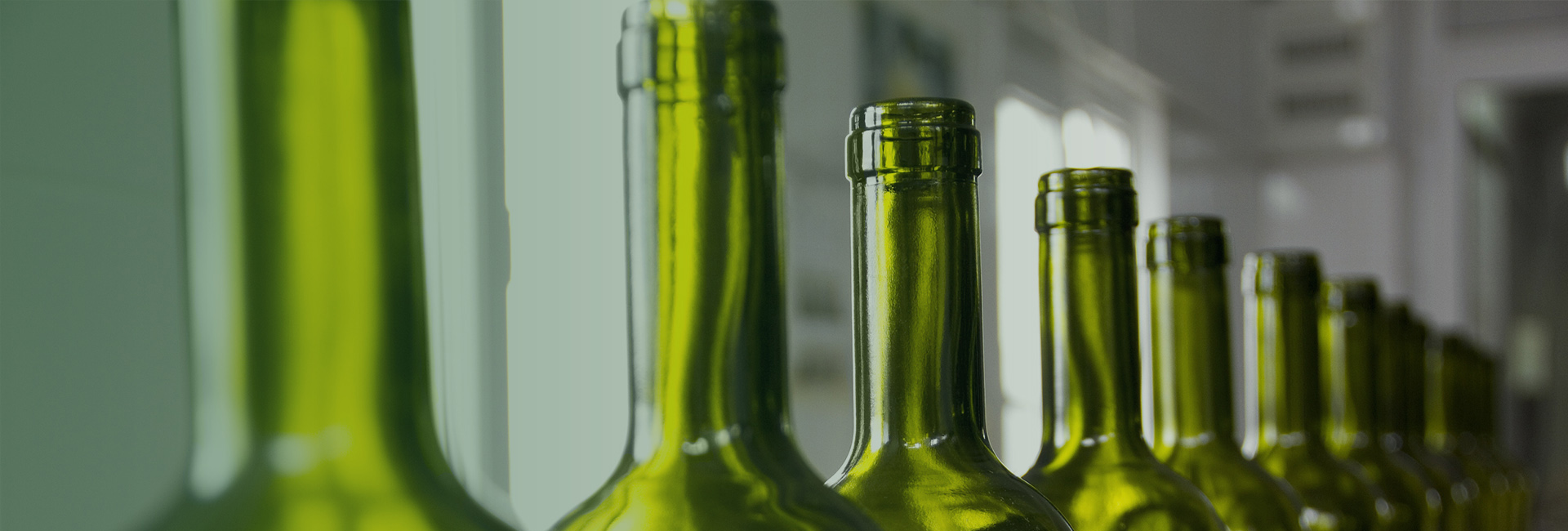Design of glass packaging container (2)
- Categories:Industry News
- Author:
- Origin:
- Time of issue:2020-10-27
- Views:0
(Summary description)Glass is one of the oldest materials known.The earliest glass used by people comes from Pliny's"Natural History"of ancient Rome.It is recorded that people discovered glass in 5000 BC.Glass has a long history in China,which has been recorded since the Sui and Tang Dynasties.According to the ruins of ancient glass products and manufacturing workshops discovered in my country,i
Design of glass packaging container (2)
(Summary description)Glass is one of the oldest materials known.The earliest glass used by people comes from Pliny's"Natural History"of ancient Rome.It is recorded that people discovered glass in 5000 BC.Glass has a long history in China,which has been recorded since the Sui and Tang Dynasties.According to the ruins of ancient glass products and manufacturing workshops discovered in my country,i
- Categories:Industry News
- Author:
- Origin:
- Time of issue:2020-10-27
- Views:0
4Characteristics of glass packaging materials
Glass is one of the oldest materials known.The earliest glass used by people comes from Pliny's"Natural History"of ancient Rome.It is recorded that people discovered glass in 5000 BC.Glass has a long history in China,which has been recorded since the Sui and Tang Dynasties.According to the ruins of ancient glass products and manufacturing workshops discovered in my country,it shows that blowpipes have been used to blow hollow glass packaging containers at least in the Song and Yuan dynasties.But for many centuries,bottles and tableware have been produced by hand blowing.Mainly relying on the skills of handicraft workers to manufacture hollow glass products
Around 1600 BC,a formal glass handicraft industry had emerged in Egypt.At that time,glass beads and vases were the first to be produced.However,due to the immature smelting process,the glass was still opaque,and it was not possible to make the glass slightly transparent until 1300 BC.In the 17th to 18th centuries AD,the steam engine came out,and the machinery industry and chemical industry had developed greatly,especially the ammonia-soda method for the production of soda ash,which enabled continuous production of pure ash,so it was called soda ash,but its biggest advantage It also lies in low cost.In 1867 Solvay set up a factory to manufacture products that won a bronze medal at the Paris World Exposition,and this method was officially named the Solvay method.Invented the technology of making soda ash with salt as raw material,which greatly promoted the development of the glass industry.In the middle of the 19th century,the regenerator pool furnace was used for glass melting and invented a semi-mechanized molding method.From 1880 to 1890,the molding technology of press-blowing method for manufacturing large mouth bottles and blow-blow method for manufacturing small mouth bottles was invented.The first bottle-making machine driven by an electric motor appeared in 1900.In 1904-1905,American M.J.Owens created a fully automatic vacuum suction bottle making machine.The advent of the drip feeder in 1915 brought the glass packaging industry into a period of rapid development.In 1925,an in-line bottle making machine appeared,which produced small mouth bottles with a blow-and-blow method.In 1940,large-mouth bottles were manufactured by the pressure-blow method,after which the line-type bottle-making machine continued to be improved.In the 20th century,glass container manufacturing has reached the level of mechanization and automation.Now,computers have been widely used in automatic control of glass production lines.
my country’s glass development also has a long history.In ancient China,it was called biliu glaze,colored glaze,and polo glaze.In modern times,it is also called material,which refers to the amorphous inorganic material obtained by cooling and solidifying the molten material.From the historical relics,we can find that my country had glass ornaments in the 8th century BC,and China reached a high level of glass manufacturing technology in the Western Zhou Dynasty more than 3,000 years ago.In the Tang and Song dynasties,hollow glass containers were blown with blowpipes.
The production of glass containers in my country has been in the autumn of 1936 since the Shanghai Jinghua Glass Factory introduced a Lintake-10 automatic bottle making machine to produce beer bottles.The history of China's adoption of automatic molding machines for mass production of beer bottles with mechanization and continuous automation began.
Today,glass has become an indispensable material in modern people's daily life,production development,and scientific research,and its application range is expanding with the development of science and technology and the continuous improvement of people's living standards.
⑴The definition of glass
What is glass?The definition of glass is:glass is an amorphous solid obtained by supercooling of the melt.Therefore,it can be understood as:glass is a molten,cooled,and solidified amorphous(it may become crystalline under certain conditions)inorganic substance,and it is a supercooled liquid.
We know that glass is a material with many excellent properties.It is transparent,chemically stable,hard,not easy to wear,and has good plasticity at a certain temperature...
As a material,it is not only used for packaging container materials,but also widely used in instrumentation,medical,electrical vacuum and electronics,optics,biology,microcrystalline,glass fiber,optoelectronics,ecological environment,nuclear technology,etc.
⑵The characteristics of glass
Because glass is an amorphous solid and a supercooled liquid,it has the following characteristics:
①Isotropic because the arrangement of the particles in the glassy substance is irregular(statistically uniform).When there is no internal stress in the glass,its physical and chemical properties(such as hardness,thermal expansion coefficient,thermal conductivity,refractive index,electrical conductivity,elastic modulus)are the same in all directions.However,once there is stress in the glass and the uniformity of the structure is destroyed,it will show anisotropy,such as a significant optical path difference.
②Metastable(meta-stable state)This is because the viscosity of the glass increases sharply during the quenching process,the particles are too late to form a regular arrangement of crystals,and the energy in the system is too late to release,but is in a metastable state(thermodynamic factors).Due to the high viscosity at room temperature,the rate of transformation into crystals is extremely low,and it cannot be transformed into crystals spontaneously(kinetic factors).
③The glassy substance with no fixed melting point transforms from a solid to a liquid without a fixed temperature,but only a temperature range(the conversion temperature range,the size of the temperature range depends on the chemical composition of the glass).In this temperature range,the molten glass gradually transforms from viscous body through viscoplastic body and viscoelastic body to elastic body.This gradual process is the basis for the good processing performance of glass.According to this performance,the glass composition or cooling rate can be adjusted to control the glass forming time.
④The continuity of the property change is cooled from the molten state to the solid state.If it is a crystal,its volume or other physical and chemical properties will change at the melting point.For example,water freezes at 0°C,and the density changes from 1g/cm³water to a density of 0.9 g/cm³of ice.When the liquid glass is cooled to become solid glass,its volume(or other physical and chemical properties)changes gradually.Even some properties(such as density,refractive index,viscosity,etc.)change with the speed of temperature change.
⑤The process of reversible glass whose properties change from solid state to molten state or vice versa can be carried out many times without the formation of new phases.
⑶Method of forming glass
The traditional method of preparing glassy substances is the melt cooling method.With the development of science and technology,many new glass forming methods have emerged,such as vapor phase and electrodeposition,vacuum evaporation and sputtering,and sol-gel methods.Some of these methods have been applied in actual production,and some are still in the stage of continuous research and improvement.The application of these new forming methods not only improves the performance of glass,but also enriches the types of glassy substances.
The conventional melt cooling method is a method commonly used in industrial production at present,and silicate glass,borate glass,phosphate glass and heavy metal oxide glass can be obtained by the conventional melt cooling method.
⑷Glass properties
①Properties closely related to container molding
The forming process of glass is closely related to the properties of glass.The forming properties of glass include the viscosity,surface tension,crystallization properties,thermal expansion,heat transfer properties and heat flow properties of the glass.The following is a brief description of several important properties.
A viscosity viscosity
"Viscosity"is a physical quantity that measures the viscosity of a fluid.Also known as viscosity coefficient and dynamic viscosity,denoted asμ.
Viscosity is a measure of fluid fluidity.It indicates the resistance caused by friction between molecules of fluid flow.There are three ways to express it:
Dynamic viscosity:The internal friction generated when two layers of fluid with an area of1m2 and a distance of 1m move relative to each other at a speed of 1m/s.Unit:Pa·S(Pa·s)
Kinematic viscosity:the ratio of the dynamic viscosity to the density P of the fluid at the same temperature.Unit is m2/s
En's viscosity:At a certain concentration,the ratio of the time required to flow out 200ml of liquid in the Engel's viscometer to the time required to flow out the same volume of distilled water at 20°C.
Viscosity is one of the important properties of glass.The viscosity of glass is a function of temperature and is a non-linear relationship,which is conducive to the forming of products.In the forming process of glass products,the relationship between the viscosity of the glass and the temperature should be fully utilized.
The forming process of glass products can be divided into two stages,namely the forming stage and the setting stage.The first stage gives the product the required shape(inner shape),and the second stage fixes the shape formed by the first stage.
Generally,the viscosity of the glass in the first stage of the forming process is 102 to 103 Pa··sec,and the viscosity of the second stage is 105.6 Pa·sec.The situation is different for different systems of glass,different products and different forming methods.
The relationship between the viscosity of glass and temperature has a close and complex relationship with the chemical composition of glass.Different forming methods require glass to have different viscosity and temperature relationships.For example,casting molding requires glass with low viscosity,good fluidity,and mechanized high-speed molding,which requires"short"glass,and"long"glass is required for press molding.
The working viscosity range of glass forming varies according to different forming methods,size and quality of products.Generally speaking,it is 102~106Pa·s,the upper limit of general industrial glass is 5×102Pa·s or 103Pa·s,and the lower limit is usually 4×107Pa·s.Small glass products have a small working viscosity range;large products have a large working viscosity range.
"Long"glass has a smaller viscosity-degree gradient than"short"glass,and its hardening speed is slower.Therefore,its forming working viscosity range is large and the forming process lasts longer.If the structure of the forming machine cannot be changed during the forming process,and the duration of each stage of the glass product forming cannot be adjusted,in order to adapt to the characteristics of the forming operation and the requirements of the machine speed,it is necessary to change the length of the glass,that is,to change the composition of the glass.To make it fit.
B surface tension
"Surface tension"refers to the tensile force between any two adjacent parts of the liquid surface perpendicular to their unit length dividing line.
The surface tension of glass is of great significance in the forming process of the product.Such as manual picking,blowing small bubbles or drip feeder,all use the surface tension of the glass to form the rudiment or gob of the spherical surface.When drawing glass tubes and glass rods,the correct cylindrical body is obtained due to the surface tension of the glass.Some glass products need to be blasted and burnt after being formed,and the surface tension of the glass is also used to heat and soften the sharp and uneven edges and become smooth.
The surface tension of glass depends on the chemical composition and temperature of the glass.In general,the surface tension of the glass decreases when the temperature increases.The surface tension of molten glass is 3 to 4 times higher than that of water,close to molten metal,about 0.15 to 0.35 N/m(150 to 350 dyne/cm).
C Heat transfer properties
The heat transfer methods of glass are conduction and radiation.The shaping of glass products is a heat exchange process,especially the second stage shaping,which relies on the decrease of glass temperature.
Glass is a poor conductor of heat,and its conduction and heat transfer depend on the thermal conductivity.The chemical composition and temperature of the glass determine the thermal conductivity.It should also be pointed out that the heat transfer of glass during the forming process is unstable heat transfer.
Radiation heat transfer is the main heat transfer method in the glass forming process,especially when the temperature is above 300℃,the performance is particularly obvious.
D thermal fluidity
From the viscosity and heat transfer properties of glass,it is not difficult to see that the forming process of glass is essentially a matter of rheology.The quality of glass products largely depends on the rheological state of the glass during the forming process.This situation is different from the rheology at room temperature.Due to the current level of research on the rheology of high-temperature glass,there is no complete theory to guide production.
②The density of glass
The density of glass is the mass per unit volume of glass.
The density of glass is closely related to its composition.The density of various glasses varies greatly.The density of quartz glass is the smallest,2.21g/cm³,and the density of glass containing PbO,Bi2O3,Ta2O3,WO2 can reach about 6g/cm³.The density of some anti-radiation glass can be as high as 8 g/cm³.Generally,the density of medical glass,bottle glass,flat glass,etc.is about 2.5 g/cm³.
The density of glass will decrease with the increase of temperature.For general industrial glass,when the temperature rises from room temperature to 1300℃,the density decreases by 6%to 12%.The decrease in density within the range of elastic deformation is related to the expansion coefficient of the glass.
The density of glass is related to the thermal history:when the glass is cooled from a high temperature state,the density of rapid cooling(quenching)is lower than that of slow cooling(annealing);the faster the cooling rate,the higher the temperature deviating from the equilibrium density,and the higher the transition point(Tg)temperature.high.
③The mechanical strength of glass
Glass is a brittle material,and its mechanical strength is generally expressed by indexes such as compression resistance,flexural resistance,tensile strength,and impact resistance.One of the reasons why glass can be widely used is that it has high compressive strength and high hardness,but its flexural and tensile strength is not high,and its brittleness is relatively high.Various methods can be used,such as annealing,tempering,surface treatment and coating,Microcrystallization,compounding with other materials,etc.,may increase the flexural strength of glass.
Factors affecting strength:temperature,composition,glass defects,surface micro-cracks,stress in the glass,fatigue phenomena,etc.
The brittleness of glass refers to the property of breaking immediately when the load exceeds the ultimate strength of the glass.It is usually expressed by the impact strength received at the time of failure,and it can also be expressed by the ratio of the compressive strength and the impact strength of the glass.The brittleness of glass is not only related to the composition,but also determined by the shape,thickness,and heat treatment conditions of the product.Therefore,when designing the bottle shape,it is necessary to consider avoiding the shape that is unfavorable to the strength.
④The thermal properties of glass
The thermal properties of glass include thermal expansion coefficient,thermal conductivity,specific heat capacity,thermal stability,etc.The coefficient of thermal expansion is one of the most important thermal properties of glass.
The performance of glass withstanding drastic temperature changes without being damaged is called the thermal stability(ΔT)of the glass.Glass containers,especially those containing food,have to undergo heating treatment after filling,which requires higher thermal stability.Any factor that can reduce the mechanical strength of the glass can reduce the stability of the glass man.vice versa.The smaller the thermal expansion coefficient of glass,the better its thermal stability.
⑤The chemical stability of glass
Glass products are subject to corrosion by water,acid,alkali,salt,gas and various chemical reagents and liquids during use.The resistance of glass to these corrosions is called the chemical stability of glass.
Glass has high chemical stability and is often used in the manufacture of packaging containers to contain food,liquid medicine and various chemical products.
In the production process of laboratories and chemical industry,glass equipment is also widely used,such as glass instruments,glass pipes,acid-resistant pumps,chemical reaction pots,etc.
Most industrial glass can resist corrosion by acids other than hydrofluoric acid.The alkali corrosion resistance of glass is poor,and water can also corrode glass at high temperature.
For example,ordinary window glass will lose its luster under the long-term erosion of the atmosphere and rain,and the glass will become dull,and there will be grease-like films,spots and other corrosion marks on the surface;various lenses of optical instruments are in use During the process,due to the action of the surrounding medium,the optical parts are covered with"fog"film,droplet film or white spots,etc.,which affects the light transmittance and imaging quality,and will cause scrap in serious cases;chemical instruments are affected by the erosion of glass Analysis and test results;for ampoules and saline bottles,the glass will dissolve in the drug solution if it is in contact with the drug solution for a long time under autoclaving and various climatic conditions,and even peel off
Scan the QR code to read on your phone
NEWS
Contact us
Mobile:15066769239 Xu Hui
18660009305 Yin Chuanhui
18605359850 Wang Songhua
Switchboard:0086-535-6953556
Fax:0086-535-6242905
Postcode:264006
E-mail:xuhui@glass-nbc.com


Copyright© Yantai NBC Glass Packaging Co., Ltd. 鲁ICP备13030287号 Powered by: 300.cn










